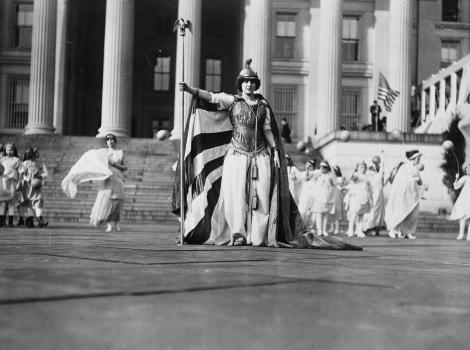
Location
“Votes for Women: A Portrait of Persistence” will outline the more than 80-year movement for women to obtain the right to vote as part of the larger struggle for equality that continued through the 1965 Civil Rights Act and arguably lingers today. The presentation is divided chronologically and thematically to address “Radical Women: 1832–1869,” “Women Activists: 1870–1892,” “The New Woman: 1893–1912,” “Compelling Tactics: 1913–1916,” “Militancy in the American Suffragist Movement: 1917–1919” and “The Nineteenth Amendment and Its Legacy.” These thematic explorations are complemented by a chronological narrative of visual biographies of some of the movement’s most influential leaders.
On view will be portraits of the movement’s pioneers, notably Susan B. Anthony and abolitionist Sojourner Truth, and 1848 Seneca Falls participants, including Elizabeth Cady Stanton and Lucy Stone. Other portraits of activists will represent such figures as Victoria Woodhull, the first woman to run for President; Carrie Chapman Catt, who devised successful state-by-state persuasion efforts; Alice Paul, who organized the first-ever march on Washington’s National Mall; and Lucy Burns, who served six different prison sentences for picketing the White House.
“Votes for Women: A Portrait of Persistence” will also shed light on the racial struggles of the suffrage movement and how African American women, often excluded by white women from the main suffrage organizations, organized for citizenship rights (including the right to vote). Portraits of African American contributors to the movement include Sarah Remond, who filed one of the earliest lawsuits protesting race segregation; Ida B. Wells, who advocated for federal laws against lynching; and Mary Church Terrell, who established the National Association of Colored Women.
The Portrait Gallery exhibition tells this complex history through an array of early photographic portraits, paintings, engravings, works on paper, lithographs, video, newspapers, postcards, books, ballots, banners, fliers, a china set, embroidery and pennants. Viewers will be able to see authentic objects, including original banners from the National Woman’s Party, a late-19th century ballot box and original writings by influential suffragists.
The exhibition is curated by Kate Clarke Lemay, historian and director of Portal, Portrait Gallery’s Scholarly Center, National Portrait Gallery.